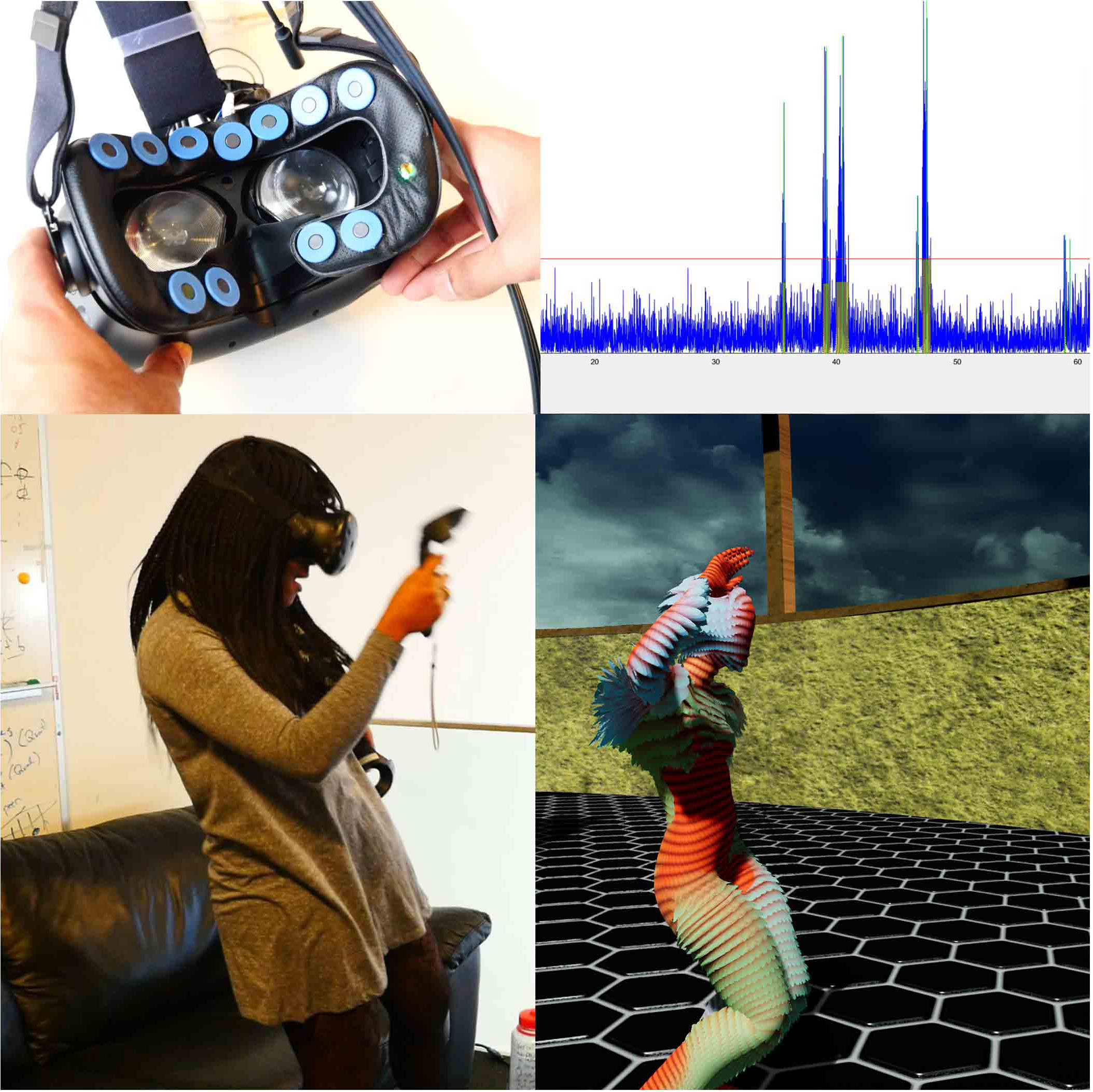EmotionalBeasts from Guillermo Bernal on Vimeo.
With the Advancement in Virtual Reality (VR) and Physiological sensing technology, even more immersive computer-mediated communication through life-like characteristics is possible. As a solution for the current lack of culture, expression and emotions in VR avatars, we propose a two-fold solution. First, integration of bio-signal sensors into the HMD and techniques to detect aspects of the emotional state of the user. Second, connect the data collected to an expressive avatar: Emotional Beasts. The creation of Emotional Beastsallowed us to experiment with the manipulation of a user's self-expression in VR space and as well as the perception of others in it, with the goal of pulling the avatar design away from the uncanny valley and making it more expressive, more relatable to our own mannerisms. Based on this we have implemented a prototype system in which VR, human motion and physiological signals are integrated to allow avatars to become more expressive in virtual environments in real time.

To create a seamless experience, we have integrated several bio-signal sensors into the faceplate of an HTC VIVE VR headset and utilized the Shimmer3 sensor for emotion-sensing. For the collection of Galvanic Skin Response, dry electrodes were positioned on the forehead area due to the fact that it is one of the areas most dense with sweat glands. GSR data reflects emotional arousal, but in order to identify how arousal and valence, motivation and cognition interact in response to physical or psychological stimuli, it becomes necessary to complement GSR with other biosensors. For the heart rate, a PPG (photoplethysmogram) sensor, which senses the rate of blood flow by utilizing light to monitor the heart’s pumping action, was placed in the temple region of the user . This is done to get insights into the respondent's physical state, anxiety and stress levels (arousal), and used to determine how changes in their physiological state relate to their actions and decisions.
